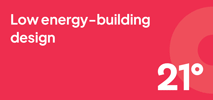UK architects are suffering the effects of a sector-wide skills crisis that threatens to derail project timelines across the country. With an ageing workforce retiring en masse and too few young professionals entering the pipeline, firms are grappling with severe staffing shortages, particularly within roofing. This talent deficit, coupled with new legislation like the upcoming Future Homes Standard and updated Part L requirements, has architects scrambling to access the necessary expertise to stay compliant and meet evolving client demands. Simon Garbett, Category Manager for Roofing Systems, Wienerberger, explains what manufacturers are doing to help plug the current skills gap and keep architectural builds on track.
The roofing skills gap poses a major hurdle for architects already contending with extended waiting times for contractors on new builds and renovations. A recent study by IronmongeryDirect found that due to labour shortages, over a quarter of tradespeople attribute long waiting lists directly to insufficient staffing. On average, clients now face over five weeks of delays just to have a contractor begin work.
For architects, this lack of available skilled labour compounds existing productivity challenges like delivery delays for building materials and struggles to find specialists with the proper training for emerging clean energy systems. Regulatory changes like the Future Homes Standard’s solar installation mandates only exacerbate these headaches.
However, innovative manufacturers are developing new integrated technologies aimed at simplifying compliance while broadening tradespeople’s skillsets. A prime example is Wienerberger’s in-roof solar panel system, which allows seamless incorporation of renewable power generation during the standard roofing process.
Preserving architectural design vision
Unlike conventional bolt-on solar arrays, Wienerberger’s panels integrate seamlessly into the roofing structure itself, enabling a streamlined, low-profile aesthetic that preserves an architect’s intended design vision. The lightweight interconnecting panels install directly onto roof battens simultaneously with standard tiles, requiring no separate racking or mounting hardware.
This integrated approach yields key benefits for architects. It fuses sophisticated renewable energy generation into the very fabric of the building envelope. Professionally installed by roofers during the standard tilework, the system simplifies what was previously a cumbersome add-on process. This consolidation of multiple tasks under one trade reduces construction timelines while delivering a clean, cohesive finished product aligned with an architect’s specifications.
Critically, such unified solar roofing systems help contractors and installers efficiently upskill to meet changing building codes and client expectations – alleviating some of the pressing labour shortage by expanding each tradesperson’s capabilities. As regulatory bodies increasingly prioritise sustainability and renewable energy integration, equipping the existing workforce with new skills through accessible training on innovative turnkey solutions will be paramount for the architectural community.
Training and accreditation
While new technologies can’t singlehandedly solve the sector’s deepening talent crisis, cohesive product-training initiatives between manufacturers and architectural firms offer a pragmatic path forward. Empowering tradespeople and contractors to cleanly merge emerging renewable systems during standard construction workflows promises to ease compliance burdens. This harmonised approach to material science, passive building strategies, and integrated renewable sources is essential for architects striving to bring ambitious sustainable designs to life amid a tightening skilled labour market.
Wienerberger recently became the first UK roofing manufacturer to launch the UK’s only advanced solar course that includes an Electrotechnical Certification Scheme Test. In partnership with GTEC Training, the course, which is part of Wienerberger’s Advanced In-Roof Solar Training programme, covers UK building regulations, local grid requirements, and the latest solar innovations. Participants receive hands-on training in in-roof solar panel and inverter installation, along with thorough instruction in electrical safety.
Empowering in-roof solar specification
Product support and training initiatives such as those provided by Wienerberger help empower architects in confidently specifying in-roof solar systems, knowing they have backing from knowledgeable professionals. In-roof solar panels represent a significant leap forward compared to traditional on-roof systems, offering a sleek and efficient energy solution that harmonises with architectural designs.
The adoption of in-roof solar technology signifies a transformative step towards sustainable construction practices, supported by comprehensive training and industry-wide collaboration. This shift not only fosters the adoption of renewable energy but also equips the construction workforce to meet both current and future demands.






